The New Lederer Three-times Certified Observatory Chronometer
Timepieces like this are essential to keeping horological curiosity alive as they prompt deeper learning of timekeeping history and present-day innovations.
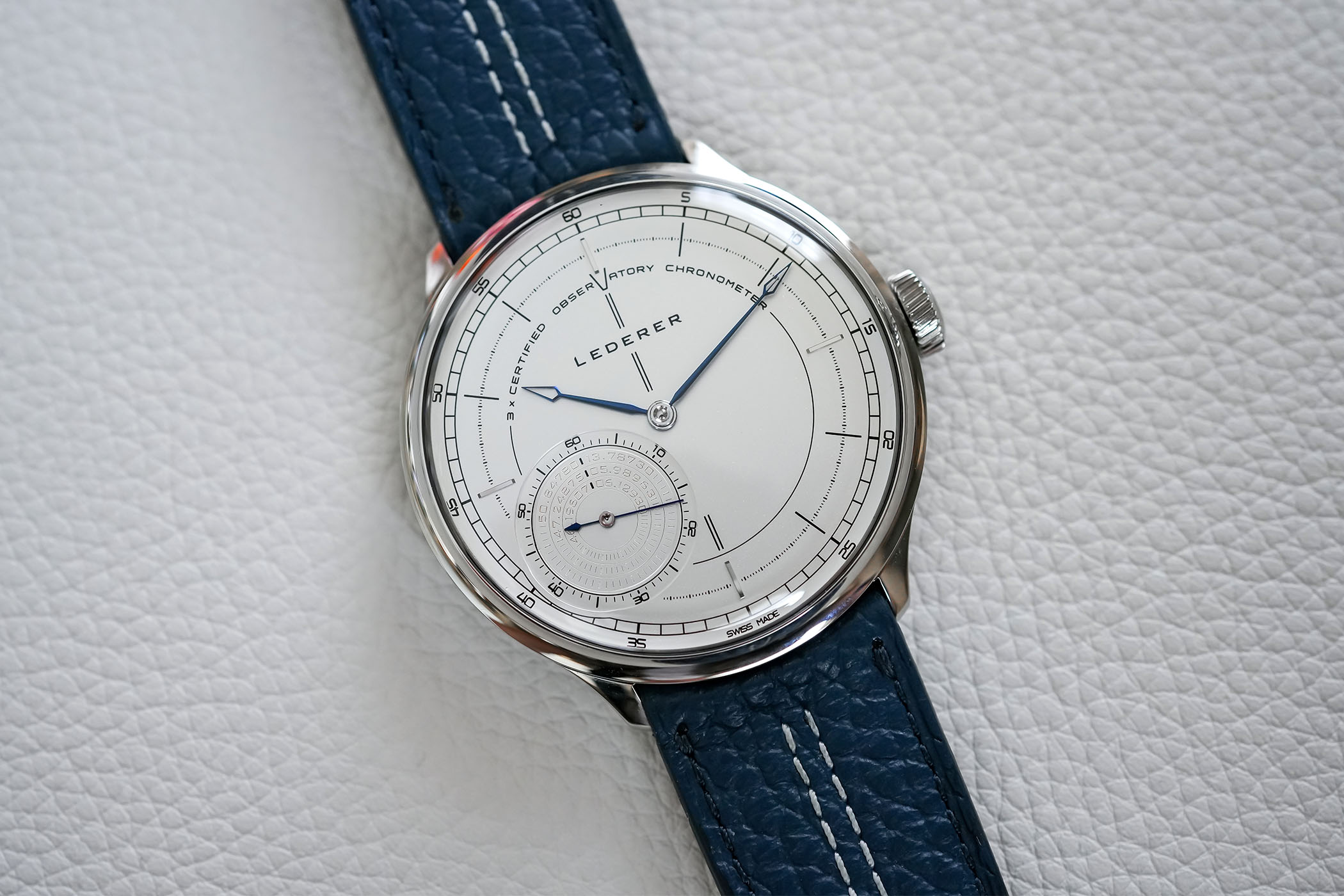
Independent watchmaker and proper horologist Bernhard Lederer has once again captured the spotlight in recent years, with the horological community admiring and discussing his Central Impulse Chronometer series. This collection of wristwatches features a unique movement designed by Lederer, regulated by a high-accuracy escapement inspired by Breguet’s natural escapement and George Daniels’ independent two-wheel, dual-impulse escapement. To showcase the remarkable performance of the CIC watch under diverse conditions, exceeding the standard COSC accuracy certification tests, Lederer created a timepiece that will undergo rigorous testing at three prestigious observatories: Besançon in France, Glashütte in Germany, and the Observatoire Chronométrique in Geneva, Switzerland. It is appropriately named the Triple Certified Observatory Chronometer; we had the opportunity to go hands-on with a prototype, and here are our impressions.
The technical depth of Lederer’s Observatory Chronometer and its concept that weaves together centuries of horological history, tradition, and an unyielding pursuit of precision is immense. This watch is a gateway, with each element linking to long-established sources of knowledge – much like dictionaries, encyclopedias, scientific reviews, and historical essays – and other watches. To truly appreciate this exclusive and remarkable creation, one could delve into the etymology and early definitions of “chronometer” and explore horological terms such as natural escapement, detent escapement, and remontoire. There’s also a wealth of knowledge in the history of observatory competitions, chronometer certifications, and the works of Breguet, Earnshaw, and Daniels. And let’s not forget 21st-century escapement designs by watchmakers like Voutilainen, F.P. Journe, Laurent Ferrier, and Charles Frodsham, to name a few.
But staying true to our hands-on review style, we’ll start with what’s immediately visible. Though it’s tempting to flip the watch over, let’s focus first on this fascinating timepiece’s case and the dial.
A more Discreet Central Impulse Chronometer
The fully polished case of the Lederer Triple Certified Observatory Chronometer is crafted from stainless steel and measures a substantial 44mm diameter, making it quite large on the wrist. While the short, curved lugs enhance ergonomics slightly, it’s worth noting that this timepiece will occupy a significant amount of wrist space. The thin bezel maximises the dial’s visibility, and the domed sapphire crystal ensures minimal distortion from side angles and virtually none when viewed head-on. The fluted crown at 3 o’clock is well-proportioned to the case and easy to operate. On the back, the sapphire crystal caseback features an anti-reflective coating and is attached to the case with adhesive rather than screws, ensuring the innovative movement is displayed in all its glory. We’ll delve into that impressive movement in a few.
The matte white dial of the Lederer Triple Certified Observatory Chronometer is crafted from sterling silver, using a traditional 19th-century technique that Bernhard Lederer mastered during his time at the now-closed Watch Museum Abeler in Wuppertal, near Düsseldorf, from 1976 to 1979. This museum once housed 2,000 exhibits showcasing 5,000 years of timekeeping and watchmaking history before closing in 2016, with its valuable collections sold at auction.
The base undergoes multiple processing steps to achieve the dial’s near-perfect white hue – reminiscent of freshly fallen snow, as the brand describes – and the result is captivating. Note that the prototype we handled had a slightly simpler dial version. Complementing the dial’s purity are blued hands, applied faceted baton indices at 3, 6, 9, and 12, and crisp, black-printed minute tracks, all adding to its elegance and pure beauty.
The dial is clean but far from simple. Between the 6 and 9 o’clock positions, a recessed, two-level small seconds subdial with a sloping edge overlaps the traditional railway minutes track running the dial’s periphery and an additional, special minutes track next to it. This special track appears as a scale with a minute divided into six segments, each marking ten seconds. The small pointer inside the hollow, arrow-shaped tip of the minute hand precisely indicates the passing of each 10-second interval, corresponding to the rhythm set by the remontoire – a feature we’ll observe further in a moment.
The subdial features an outer seconds track with markings and Arabic numerals at 10-second intervals on its narrow upper level. On the lower surface, three concentric decorative rings are engraved with the coordinates of the observatories where the watch will be tested for certification. Nearest to the centre are the coordinates for the Observatoire Chronométrique in Geneva (46.19607 | 06.12930), followed by the French Besançon Observatory in the middle ring (47.24875 | 05.98963), and finally, the German Glashütte Observatory’s location (50.84780 | 13.78730) engraved closest to the edge.
The main dial also features a finely printed circular line, interrupted at the top by the “3 x Certified Observatory Chronometer” designation. The “V” in this text is particularly prominent, said to symbolize the meridian sign, highlighting the watch’s connection “to the legacy of chronometric excellence”. However, I like to think of the “V” and the double line extending from it as resembling a metronome – a fitting metaphor, as Bernhard Lederer often explains his innovative mechanism using the word. And now, it’s time to take a closer look at that remarkable movement.
A Spectacular movement
Turn the watch over, and the highly domed sapphire crystal caseback reveals the movement in all its glory, inviting closer inspection. For a more detailed explanation of the Central Impulse Chronometer’s concept, origins, and mechanics, I encourage you to revisit our previous articles. But for now, let’s focus on what we see here… and there’s plenty to see.
The movement is the Calibre 9012, nearly unchanged from earlier CIC versions, though a smaller CIC calibre designed for a 39mm case was introduced earlier this year. The movement has a great architectural feel and showcases a variety of decorative finishes with polished bevelled edges that immediately catch the eye. The steel components are mirror-polished, while satin finishing, surface graining, and bead blasting are also skillfully applied, creating a rich and intricate image.
On the crown side, take note of the integrated triple-click, the crown wheels, and, just below, the two gold-coloured barrels that wind simultaneously. The balance wheel is flanked by two independent escapement wheels, with the two remontoires d’égalité positioned between the fourth and fifth wheels of the gilded gear trains and within the escape wheels. These remontoires operate every ten seconds, ensuring that energy is delivered every five seconds. As a constant-force mechanism, the remontoire ensures even torque distribution to the escape wheel, which directly impulses the balance. This steady flow of energy helps maintain a more consistent rate and enhances precision. While precision is invisible, you can see the remontoires in action.
Although Lederer’s escapement, with its optimized concave-cut stone designed to advance the moment of contact between the escape wheel tooth and the balance wheel’s impulse pallet, is not fully visible (you can catch glimpses), the key features of his patented chronometer escapement are easy to identify: two independent barrels, two independent gear trains, two constant-force mechanisms, and two independent escapement wheels.
With the crown on the left, the movement side at 6 o’clock features an engraved golden wind rose, a distinguishing mark for each of the eight examples of the Lederer Observatory Chronometer, all of which will be delivered to customers with certificates from the three observatories. At the time of writing, the watches are still “undergoing testing” with Lederer promising to share the results of these trials once available – something we’re all eager to see, as it will reveal just how accurate and precise these timepieces truly are. Until then, we can delve into modern wristwatch escapement designs, admiring today’s most innovative watchmakers’ relentless pursuit of accuracy and precision.
Availability & Price
The 8-piece limited series Lederer Observatory Chronometer will be delivered with a leather strap closed with a pin buckle; the price is CHF 146,000, excluding VAT. For more, visit lederertimepieces.com.


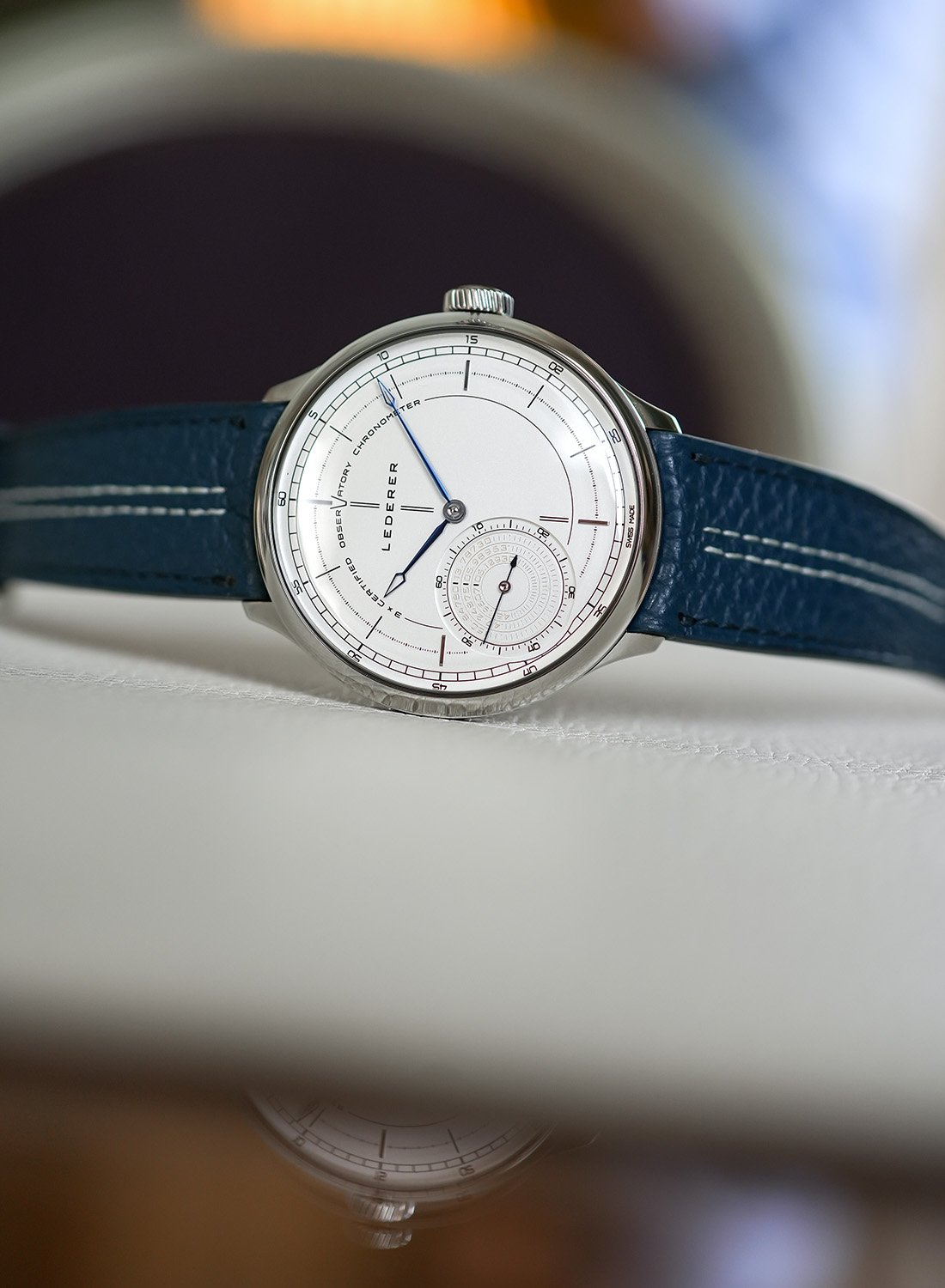
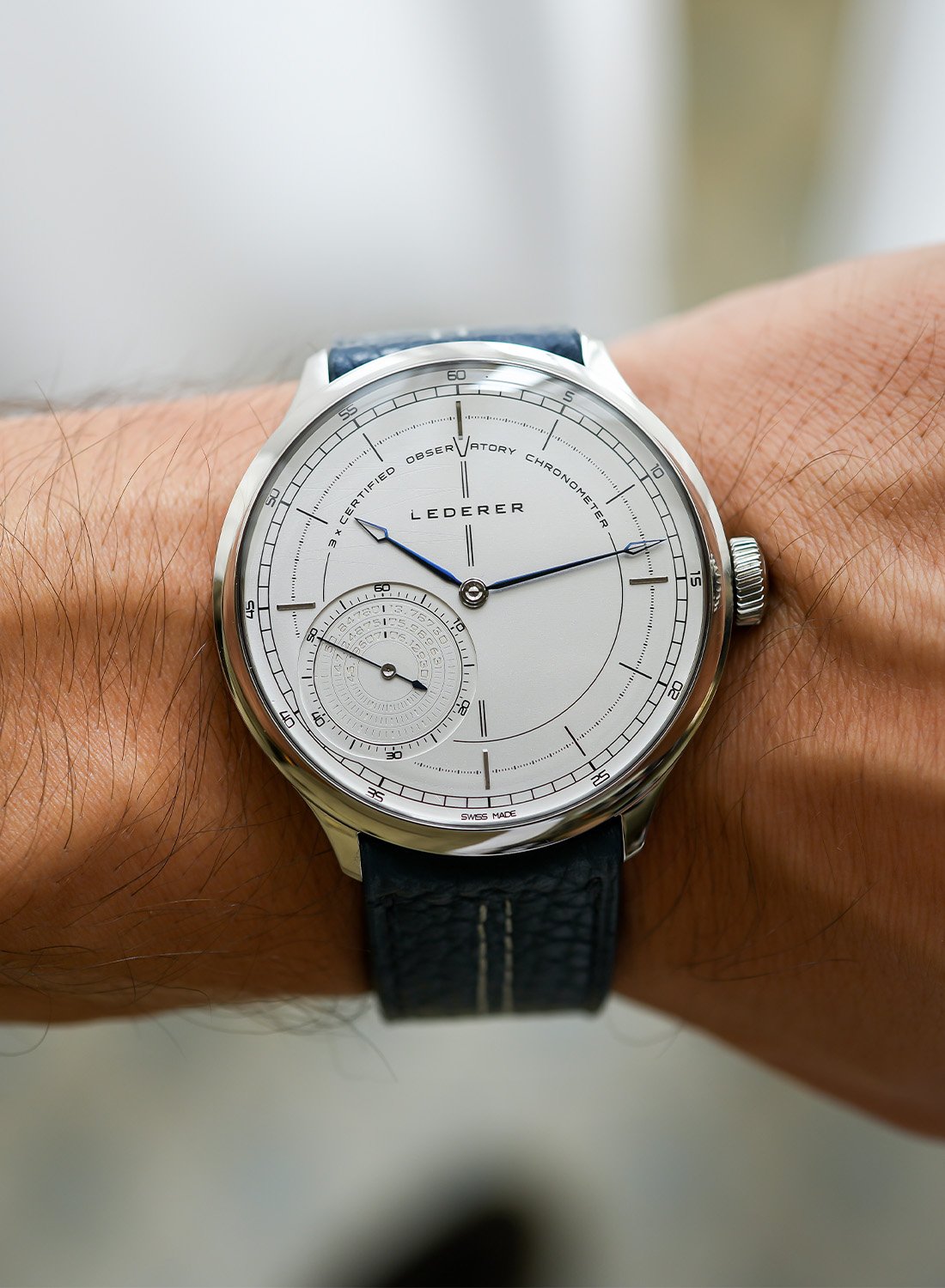
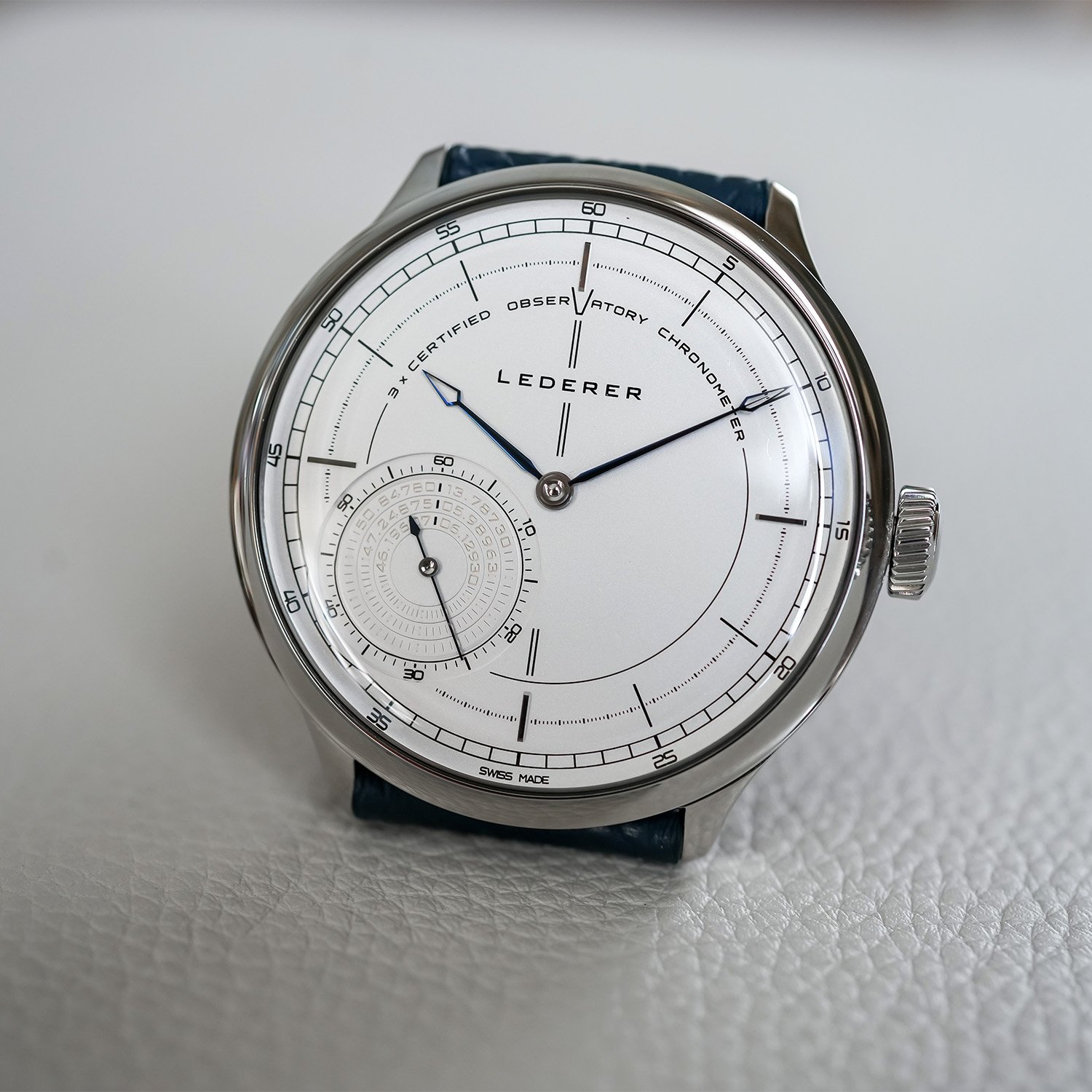
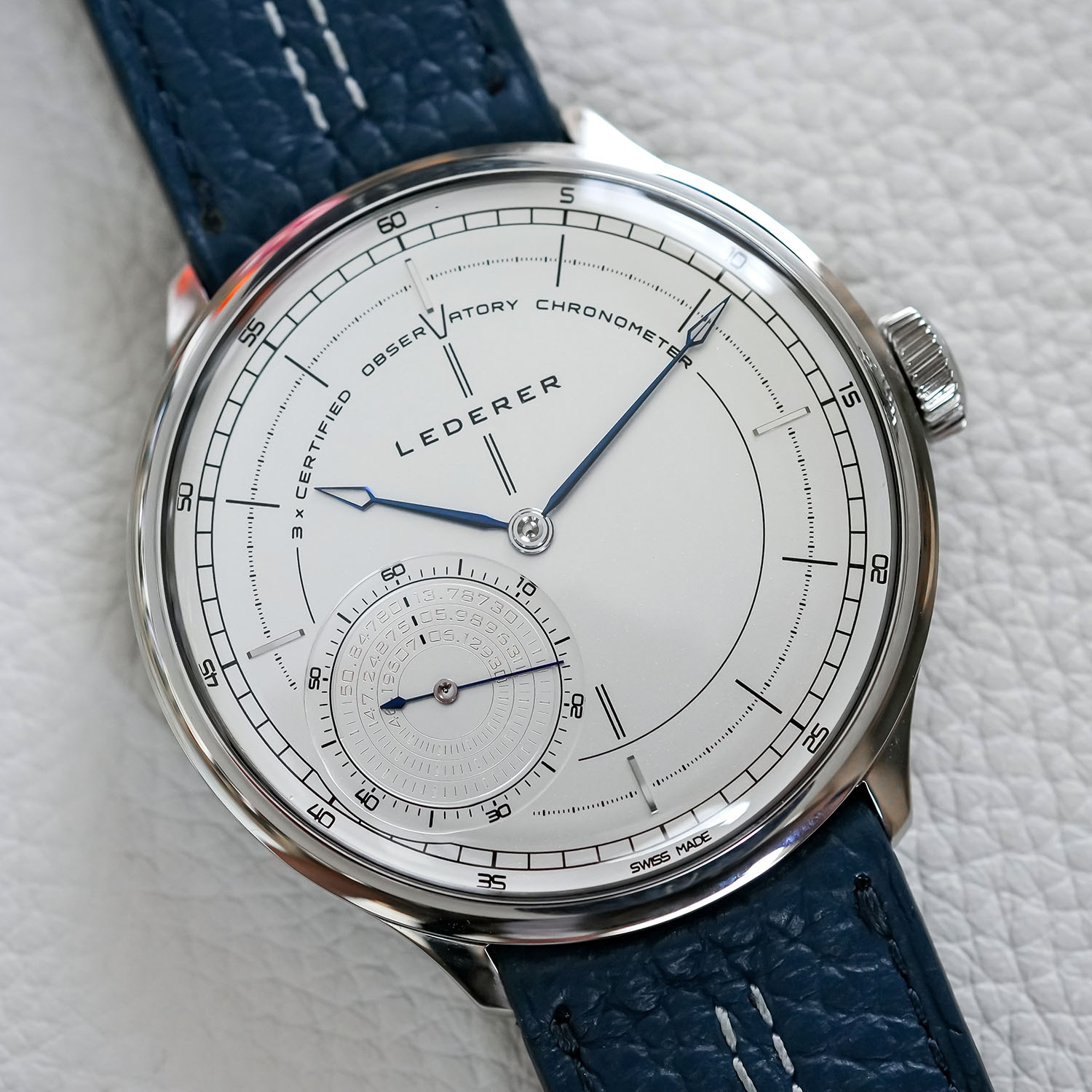

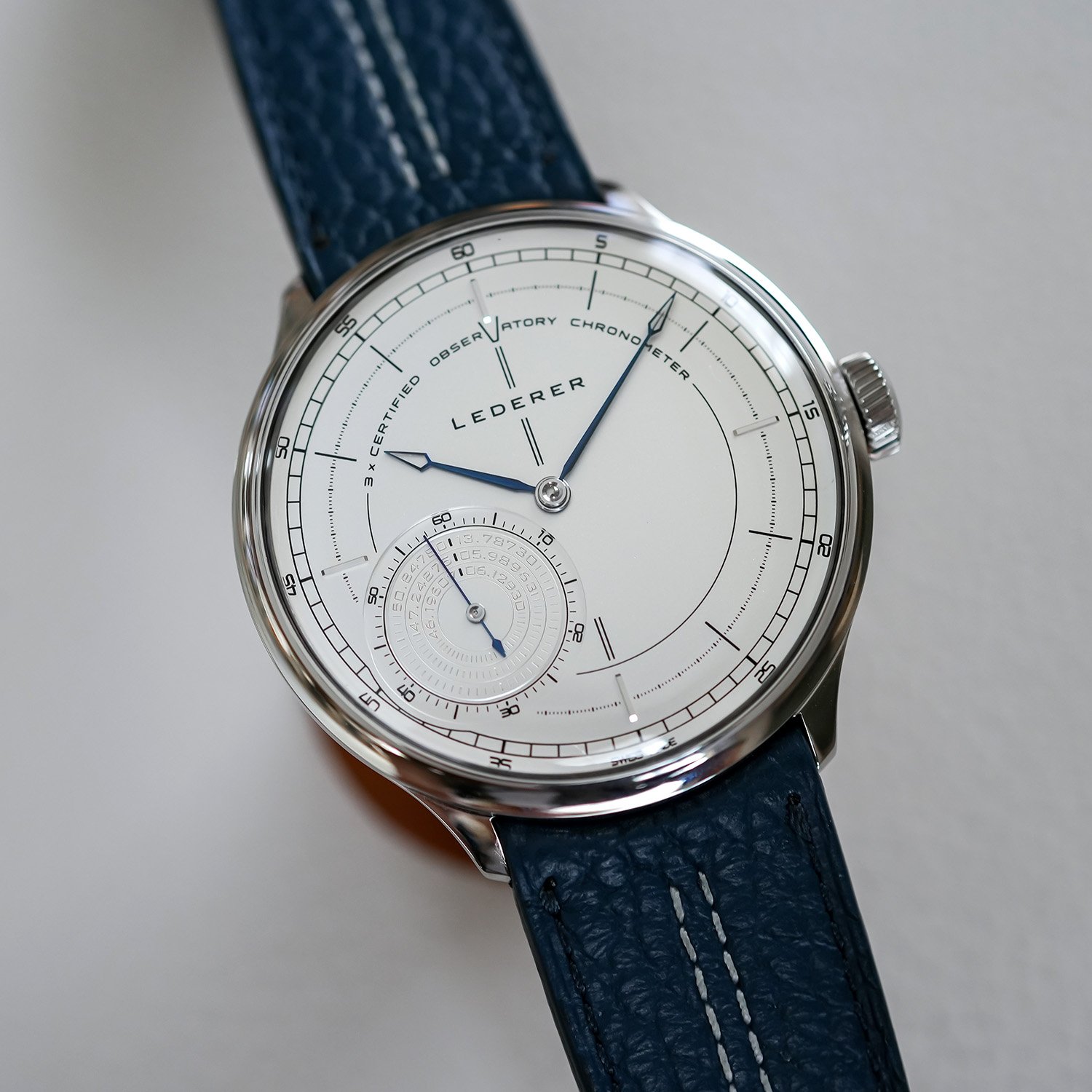
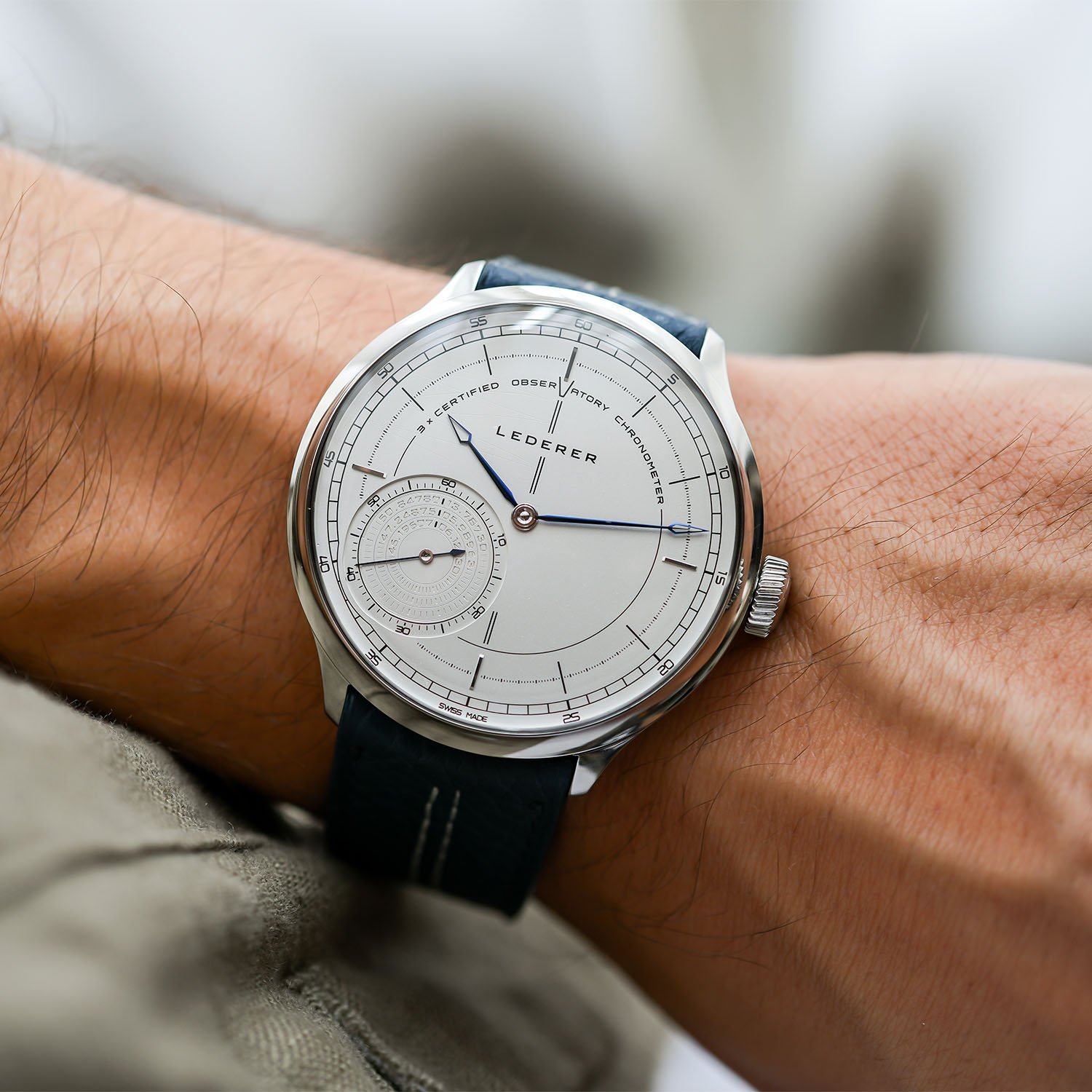
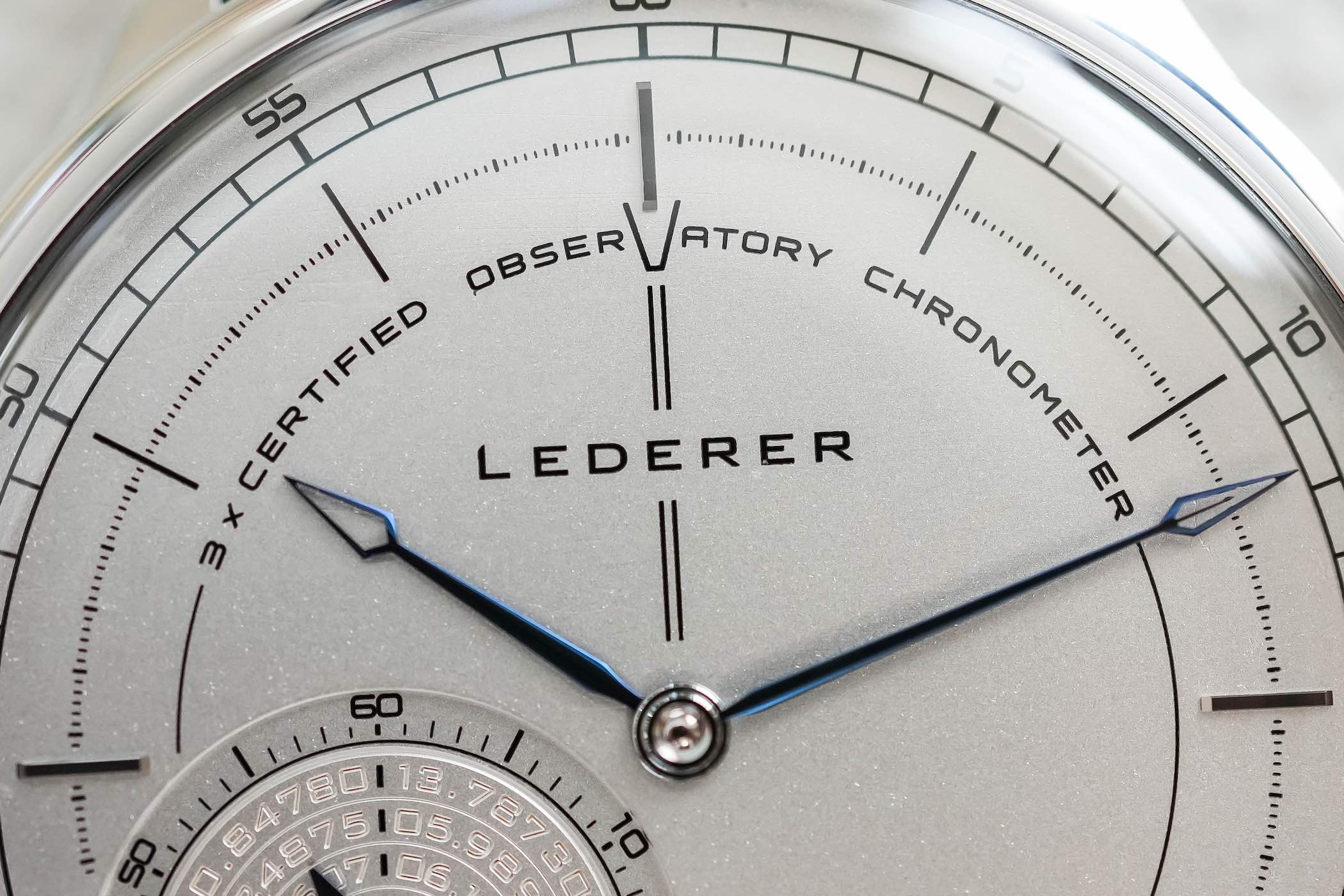
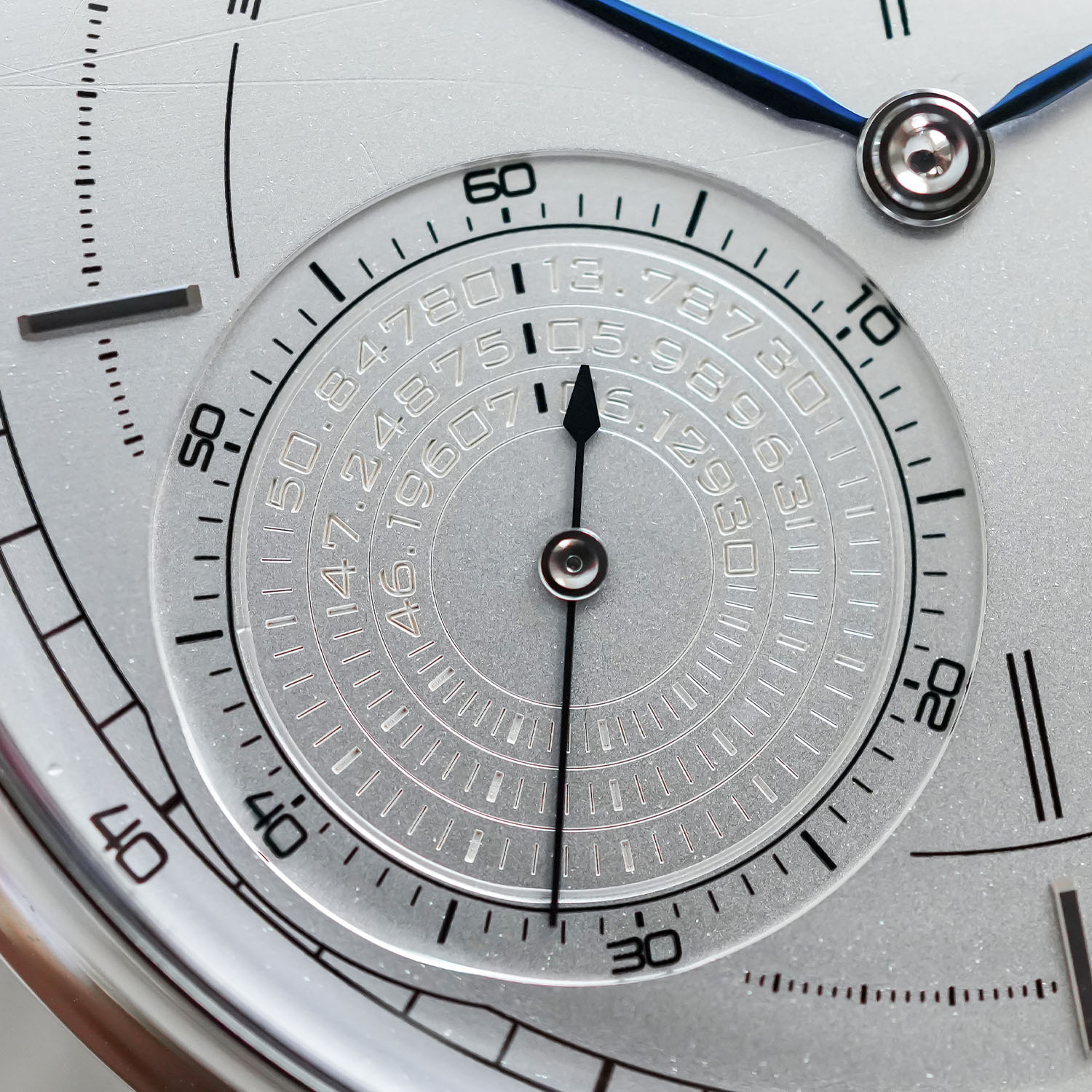

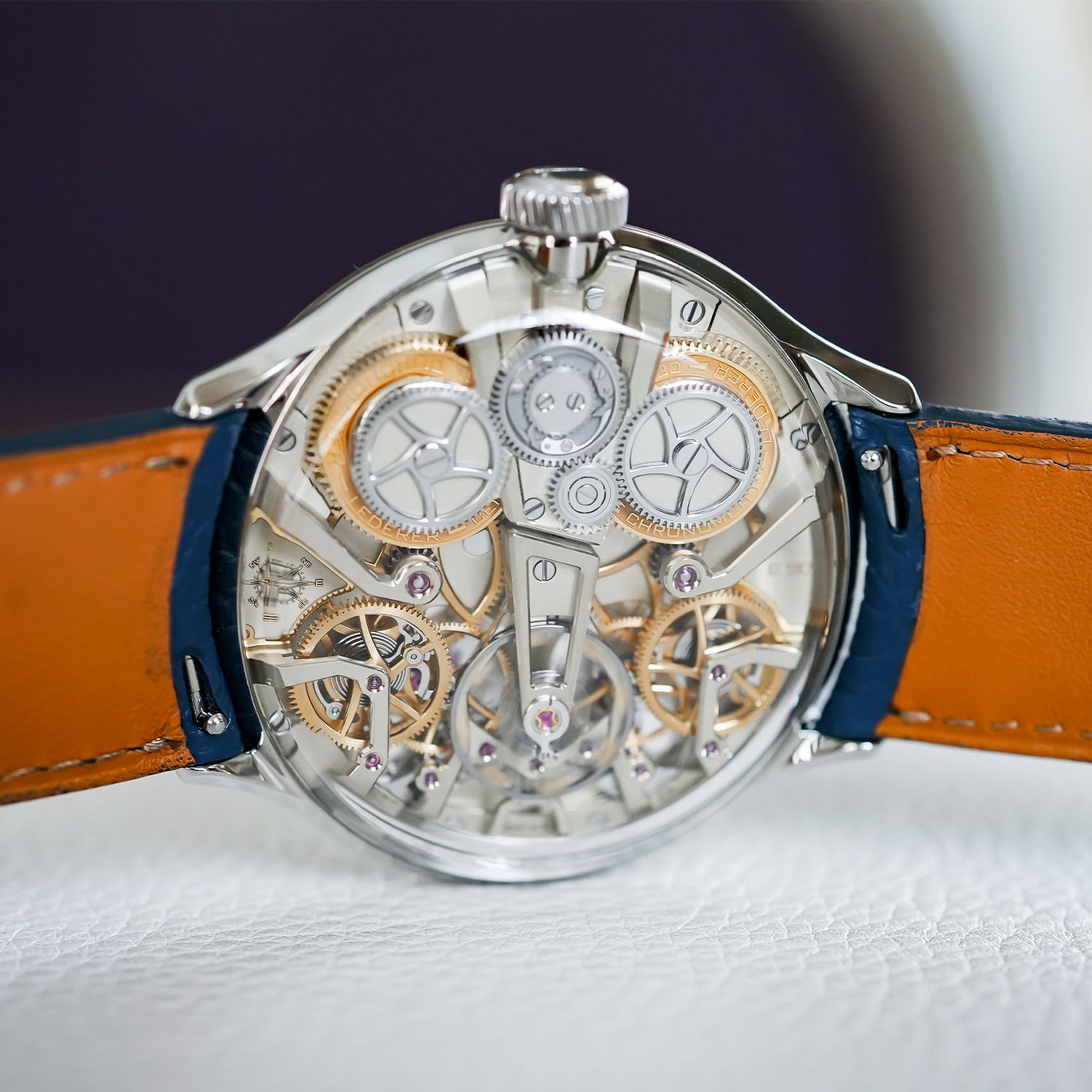
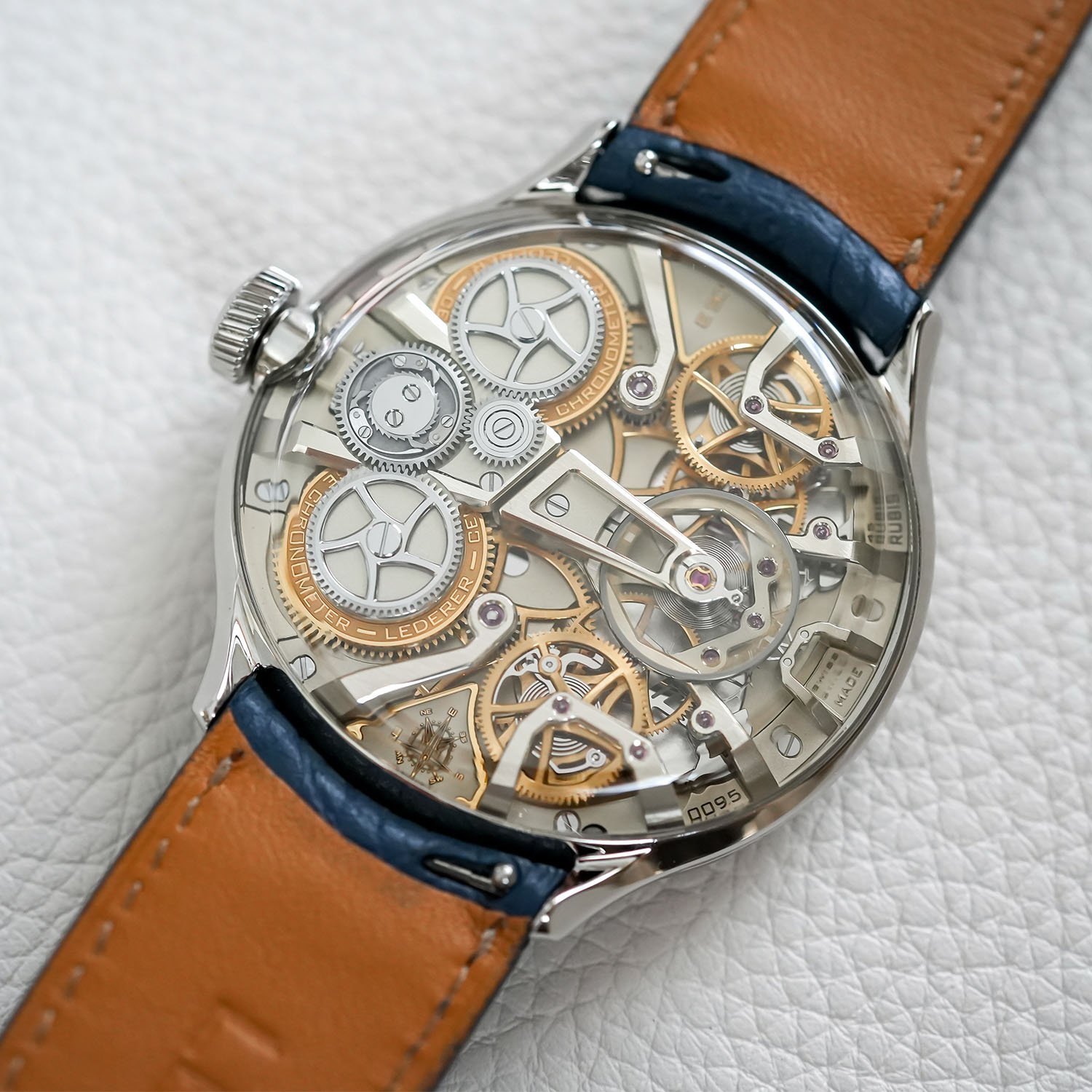
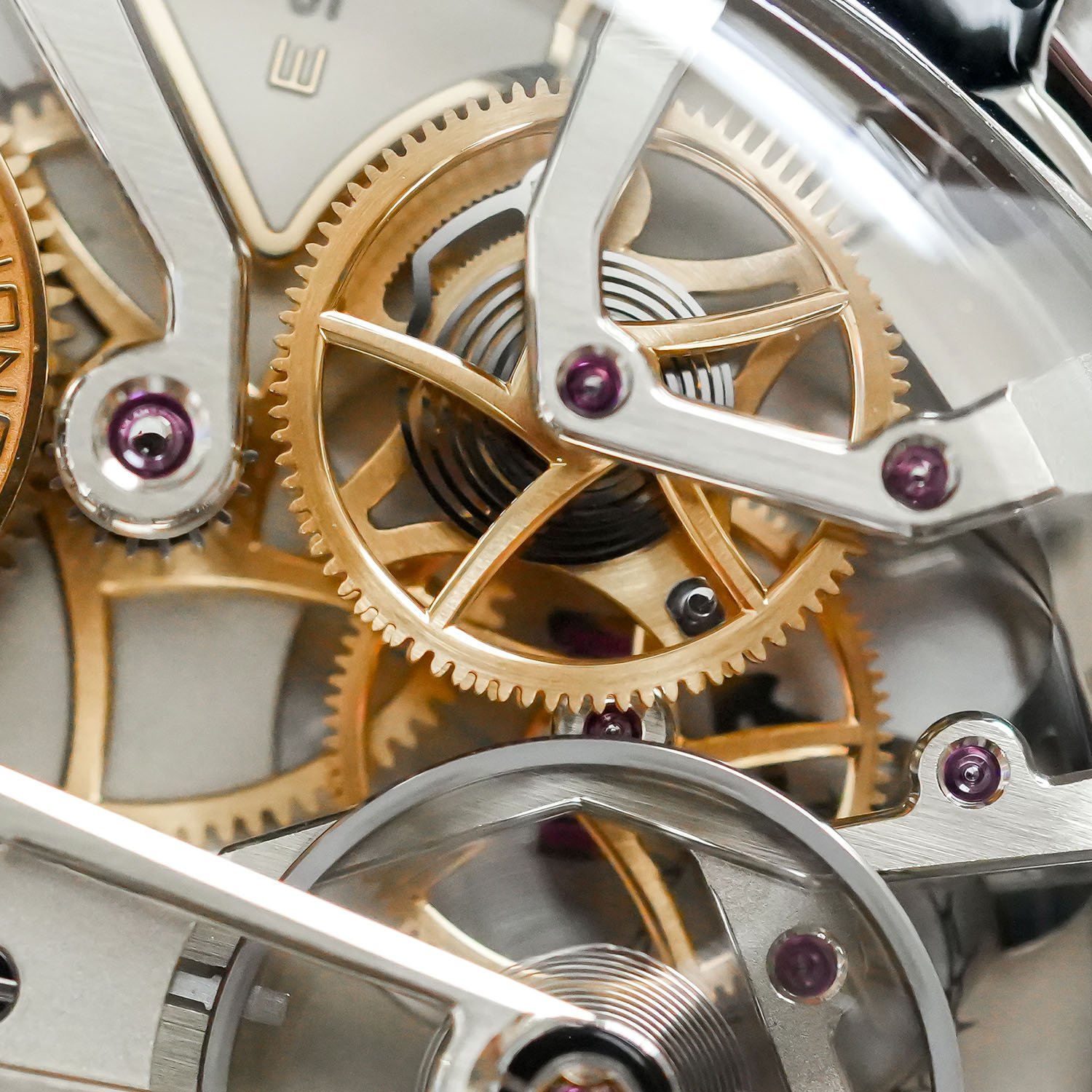
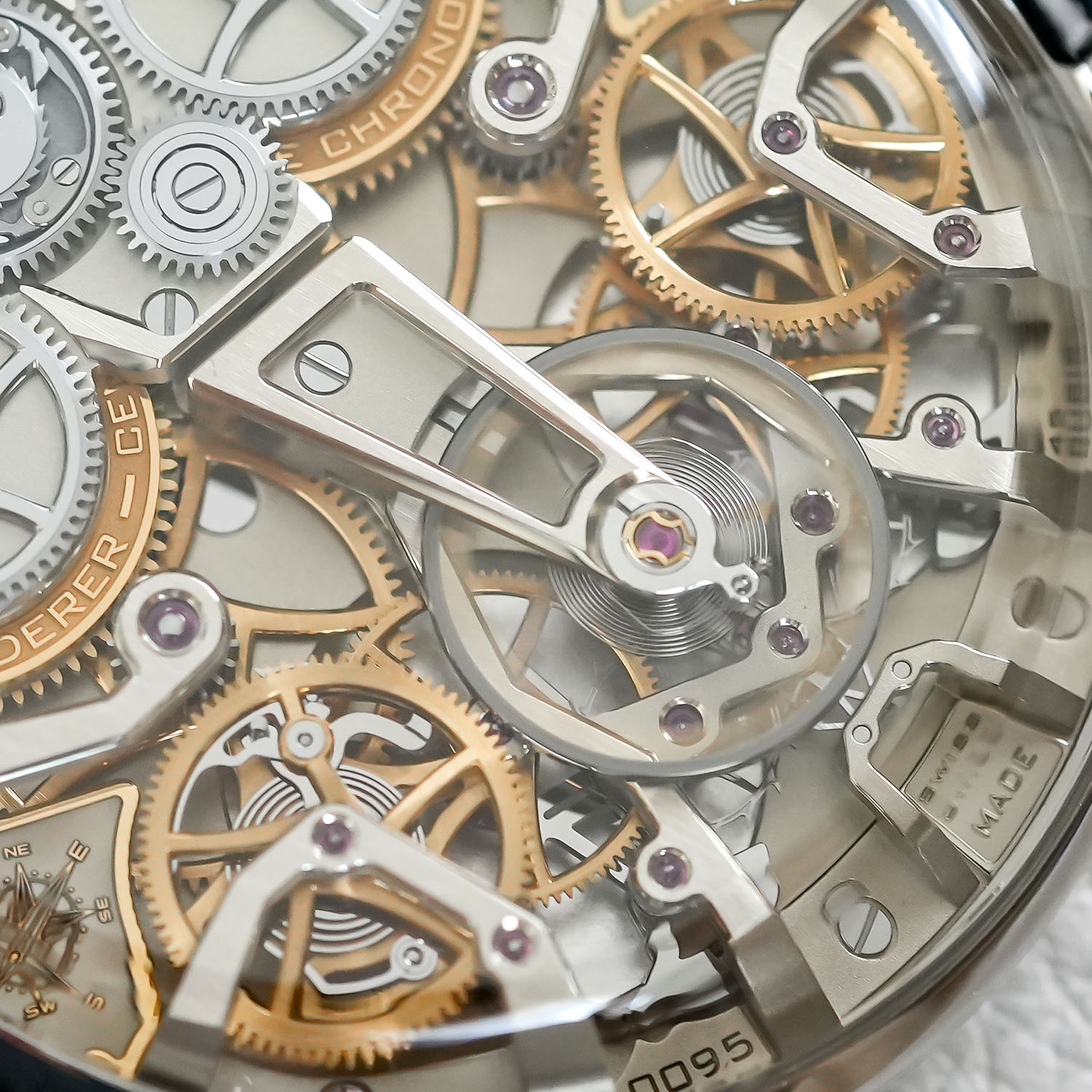

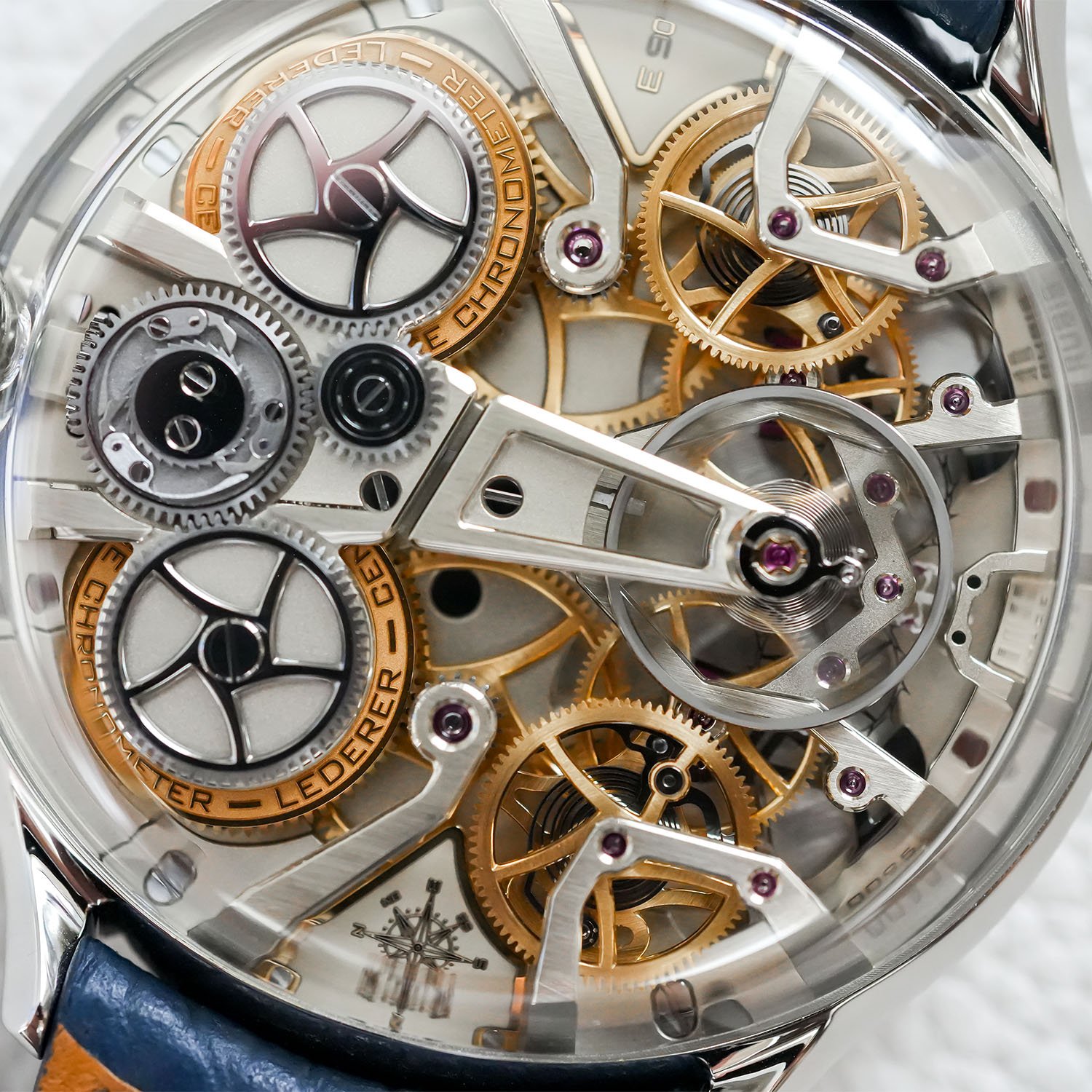



2 responses
He looks exactly like what I would imagine a Bernhard Lederer to look like.
Can someone please tell me what the accuracy of this watch is plus or minus in terms of seconds gained or lost? I don’t know if it’s done by the month or by the year? I recently read somewhere where “Grand Seiko“ has a movement called UFA and it is certified to be plus or -20 seconds in an entire year! Thank you